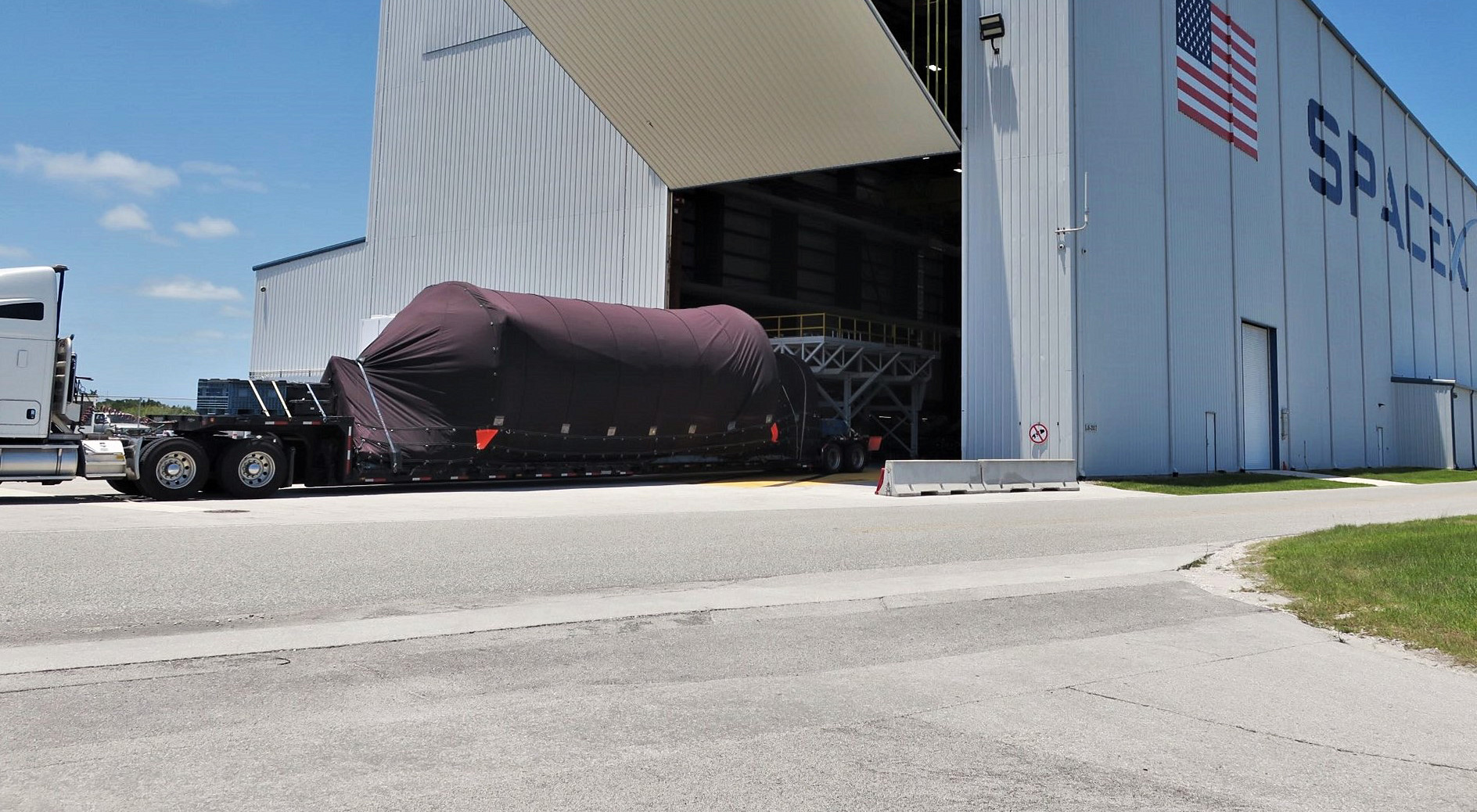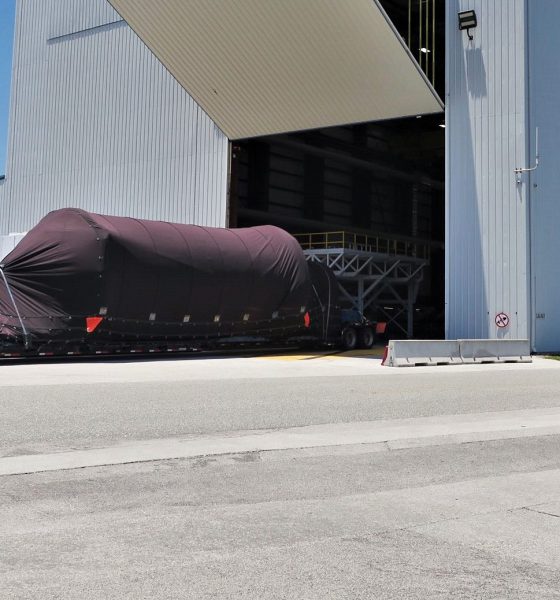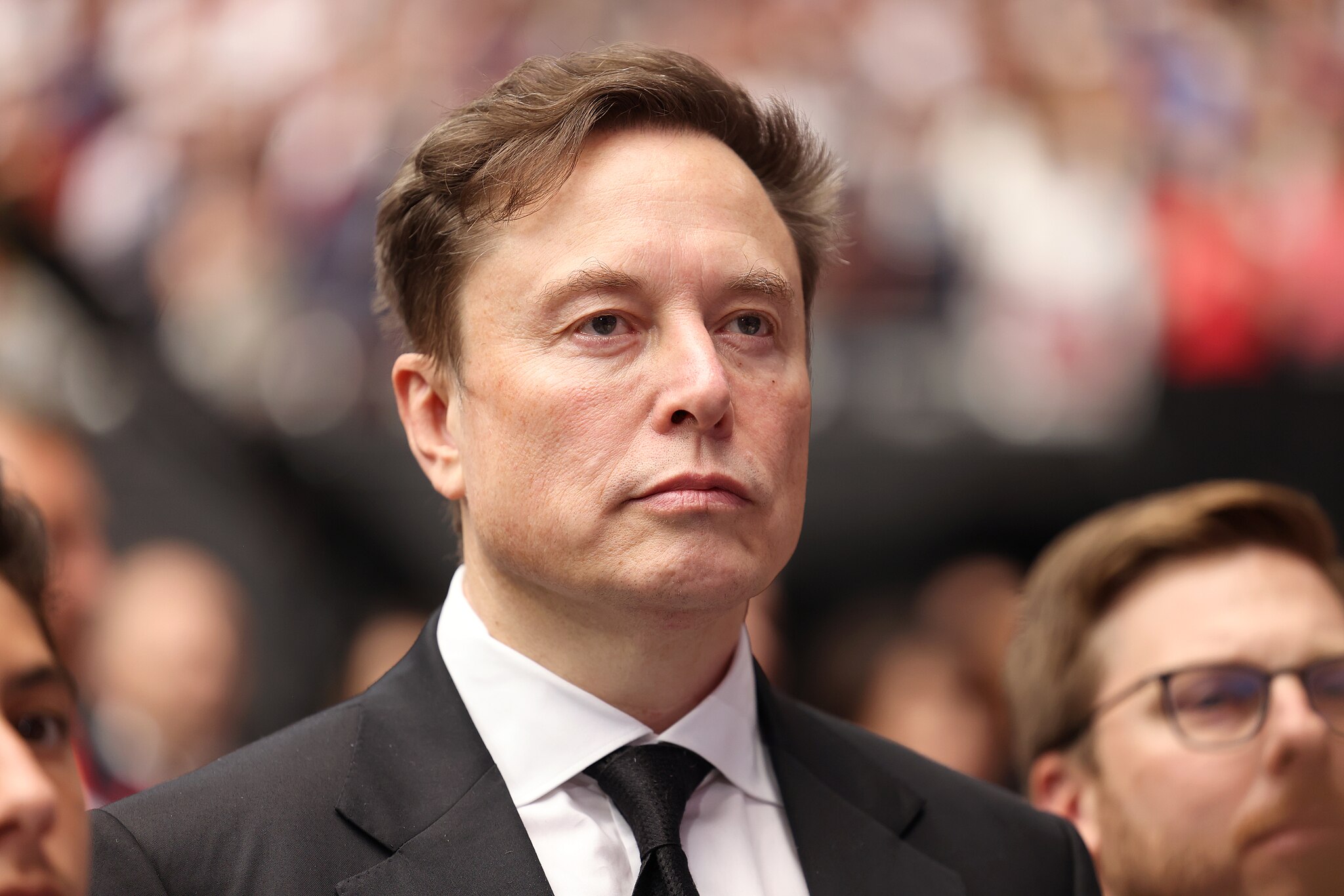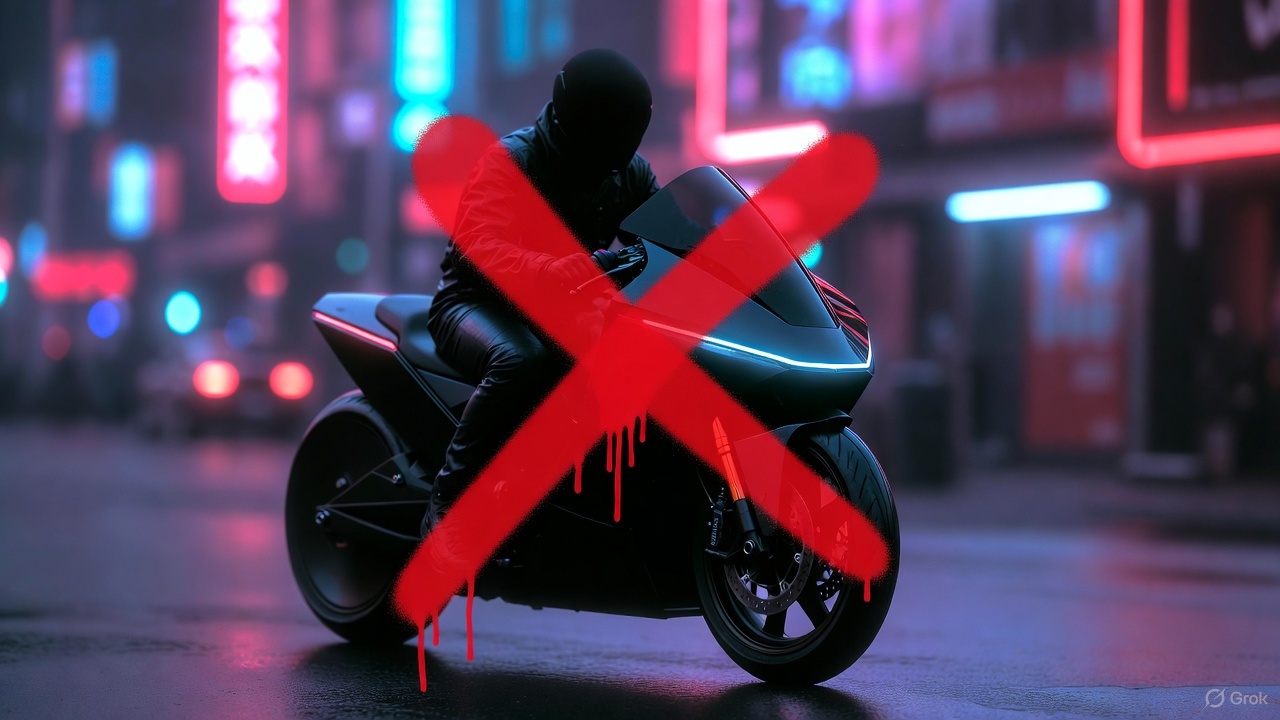

News
SpaceX’s next Falcon Heavy hits milestone as final rocket parts arrive in Florida
SpaceX has reached a critical milestone on the road to Falcon Heavy’s third flight: all major parts of the rocket – three boosters, an interstage, and a payload fairing – are now officially on-site at the company’s Pad 39A launch facilities.
This means that all that stands between SpaceX, the USAF, and the critical mission is the integration of the hardware into one vehicle, as well as the integration and encapsulation of all 24 customer satellites in the Falcon payload fairing. As noted by the USAF Space and Missile Systems Center (SMC), Falcon Heavy’s Space Test Program-2 (STP-2) mission will be exceptionally challenging and important for SpaceX for a variety of reasons.
Falcon Heavy: The Upper Stagening
Although the general performance of the three first stage boosters will be absolutely critical, the US Air Force’s STP-2 mission manages to cram in several additional major goals. First and foremost, all eyes will be on SpaceX’s Falcon upper stage (S2). Scheduled to last no less than several hours, the upper stage will be put through its paces like never before, requiring four separate ignitions and shutoffs of its Merlin Vacuum engine. For SpaceX, this may be the first time the company has ever attempted the feat – if any on-orbit testing has been done after completing customer missions, SpaceX has never commented on it.
Back in February 2018, Falcon Heavy’s launch debut also happened to mark the first flight-test of a true long-duration upper stage coast and third ignition, a spectacular success that sent Starman and a Tesla Roadster into a heliocentric orbit that now reaches beyond Mars. As such, SpaceX will by no means be walking into the challenges of STP-2 unprepared. In fact, the coast required on Flight 1 may have technically been more challenging than any one of the four separate burns S2 will need to perform on STP-2. However, combining the need to do all four burns and deployments rather quickly and in sequence, the critical need for accurate orbital insertions, and high standards of reliability and mission assurance expected by the USAF, STP-2 will easily be the hardest mission SpaceX has yet to attempt.

If SpaceX succeeds, the benefits will stretch far beyond simply satisfying an Air Force requirement and securing the USAF’s Falcon Heavy certification. Once SpaceX has rigorously demonstrated the reliability of Falcon 9’s upper stage for long coasts and high numbers of ignition events, the company will be able to apply that as a marketable product. Potential customers include the usual communications satellite operators desiring a direct-to-GEO insertion, saving time (and thus making money faster) by skipping the orbit-raising that comes with easier transfer orbits.
One major use-case – as demonstrated by Falcon Heavy’s interplanetary launch debut – is sending payloads beyond Earth orbit, a capability that NASA would undoubtedly take advantage of.
Reusability makes a surprise entrance
But wait, there’s more! In a predictable but still largely unexpected turn of events, the Air Force has also selected Falcon Heavy’s STP-2 mission as an opportunity to gain familiarity with the rocket reusability SpaceX is famous for. Falcon Heavy’s second mission and commercial launch debut – Arabsat 6A – used three all-new Block 5 boosters, two of which returned to land after gentle recoveries. Known as B1052 and B1053, the lightly-used boosters are now scheduled to become the first flight-proven orbital-class rockets launched on a Department of Defense (DoD) mission in 25 years, since the Space Shuttle’s final military mission in 1992.
If successful, SpaceX will help pave the way for the US military to seriously adopt reusable rockets and develop the “certification” procedures needed to do so. This will benefit all prospective US launch providers, not just SpaceX, but SpaceX will likely be the only company flying valuable payloads on flight-proven rockets until Blue Origin and ULA’s Vulcan achieve flight-proven certification for military launches. Much like regular certification often requires multiple launch demonstrations, flight-proven certification will likely be at least as – if not more – stringent. For New Glenn, that milestone might come as early as 2023-2025, while Vulcan – if a reusable engine section is ever actually implemented – is unlikely to even complete its launch debut – let alone first reuse – before 2025.
As such, SpaceX is quite literally half a decade ahead of its prospective competitors when it comes to certifying flight-proven rockets for high-value launches. Additionally, just the act of the USAF completing its development of a reusability certification process will likely encourage – if not directly lay the foundation for – NASA to seriously consider doing the same with its own launch services.
Check out Teslarati’s Marketplace! We offer Tesla accessories, including for the Tesla Cybertruck and Tesla Model 3.

News
Tesla’s new Holiday perk is timed perfectly to make FSD a household name
Tesla AI4 owners get FSD (Supervised) through Christmas, New Year’s Eve and well into the post-holiday travel season.

Tesla quietly rolled out a free Full Self-Driving (Supervised) trial for roughly 1.5 million HW4 owners in North America who never bought the package, and the timing could very well be genius.
As it turns out, the trial doesn’t end after 30 days. Instead, it expires January 8, 2026, meaning owners get FSD (Supervised) through Christmas, New Year’s Eve and well into the post-holiday travel season. This extended window positions the feature for maximum word-of-mouth exposure.
A clever holiday gift
Tesla watcher Sawyer Merritt first spotted the detail after multiple owners shared screenshots showing the trial expiring on January 8. He confirmed with affected users that none had active FSD subscriptions before the rollout. He also observed that Tesla never called the promotion a “30-day trial,” as the in-car message simply reads “You’re Getting FSD (Supervised) For the Holidays,” which technically runs until after the new year.
The roughly 40-day period covers peak family travel and gatherings, giving owners ample opportunity to showcase the latest FSD V14’s capabilities on highway trips, crowded parking lots and neighborhood drives. With relatives riding along, hands-off highway driving and automatic lane changes could become instant conversation starters.
Rave reviews for FSD V14 highlight demo potential
FSD has been receiving positive reviews from users as of late. Following the release of FSD v14.2.1, numerous owners praised the update for its smoothness and reliability. Tesla owner @LactoseLunatic called it a “huge leap forward from version 14.1.4,” praising extreme smoothness, snappy lane changes and assertive yet safe behavior that allows relaxed monitoring.
Another Tesla owner, @DevinOlsenn, drove 600 km without disengagements, noting his wife now defaults to FSD for daily use due to its refined feel. Sawyer Merritt also tested FSD V14.2.1 in snow on unplowed New Hampshire roads, and the system stayed extra cautious without hesitation. Longtime FSD tester Chuck Cook highlighted improved sign recognition in school zones, showing better dynamic awareness. These reports of fewer interventions and a more “sentient” drive could turn family passengers into advocates, fueling subscriptions come January.
Elon Musk
Elon Musk predicts AI and robotics could make work “optional” within 20 years
Speaking on entrepreneur Nikhil Kamath’s podcast, Musk predicted that machines will soon handle most forms of labor, leaving humans to work only if they choose to.

Elon Musk stated that rapid advances in artificial intelligence and robotics could make traditional work unnecessary within two decades.
Speaking on entrepreneur Nikhil Kamath’s podcast, Musk predicted that machines will soon handle most forms of labor, leaving humans to work only if they choose to.
Work as a “hobby”
During the discussion, Musk said the accelerating capability of AI systems and general-purpose robots will eventually cover all essential tasks, making human labor a choice rather than an economic requirement. “In less than 20 years, working will be optional. Working at all will be optional. Like a hobby,” Musk said.
When Kamath asked whether this future is driven by massive productivity growth, Musk agreed, noting that people will still be free to work if they enjoy the routine or the challenge. He compared future employment to home gardening, as it is something people can still do for personal satisfaction even if buying food from a store is far easier.
“Optional” work in the future
Elon Musk acknowledged the boldness of his claim and joked that people might look back in 20 years and say he was wrong. That being said, the CEO noted that such a scenario could even happen sooner than his prediction, at least if one were to consider the pace of the advancements in AI and robotics.
“Obviously people can play this back in 20 years and say, ‘Look, Elon made this ridiculous prediction and it’s not true,’ but I think it will turn out to be true, that in less than 20 years, maybe even as little as ten or 15 years, the advancements in AI and robotics will bring us to the point where working is optional,” Musk said.
Elon Musk’s comments echo his previous sentiments at Tesla’s 2025 Annual Shareholder Meeting, where he noted that Optimus could ultimately eliminate poverty. He also noted that robots like Optimus could eventually provide people worldwide with the best medical care.
Elon Musk
Elon Musk reiterates why Tesla will never make an electric motorcycle
Tesla CEO Elon Musk preemptively shut down speculations about a Tesla road bike once more.

Tesla CEO Elon Musk preemptively shut down speculations about a Tesla road bike once more, highlighting that the electric vehicle maker has no plans to enter the electric motorcycle market.
Musk posted his clarification in a post on X.
Musk’s reply to a fun AI video
X user @Moandbhr posted an AI video featuring the Tesla CEO on the social media platform, captioning it with “Mr. Elon Musk Just Revealed the Game-Changing Tesla Motorcycle.” The short clip depicted Musk approaching a sleek, single-wheeled vehicle, stepping onto it, and gliding off into the distance amid cheers. The fun video received a lot of traction on X, gaining 3.1 million views as of writing.
Musk replied to the post, stating that a Tesla motorcycle is not going to happen. “Never happening, as we can’t make motorcycles safe. For Community Notes, my near death experience was on a road bike. Dirt bikes are safe if you ride carefully, as you can’t be smashed by a truck,” Musk wrote in his reply.
Musk’s Past Comments on Two-Wheelers
Musk also detailed his reservations about motorcycles in a December 2019 X post while responding to questions about Tesla’s potential ATV. At the time, he responded positively to an electric ATV, though he also opposed the idea of a Tesla road-going motorcycle. Musk did state that electric dirt bikes might be cool, since they do not operate in areas where large vehicles like Class 8 trucks are present.
“Electric dirt bikes would be cool too. We won’t do road bikes, as too dangerous. I was hit by a truck & almost died on one when I was 17,” Musk wrote in his post.
Considering Musk’s comments about dirt bikes, however, perhaps Tesla would eventually offer a road bike as a recreational vehicle. Such a two-wheeler would be a good fit for the Cybertruck, as well as future products like the Robovan, which could be converted into an RV.









